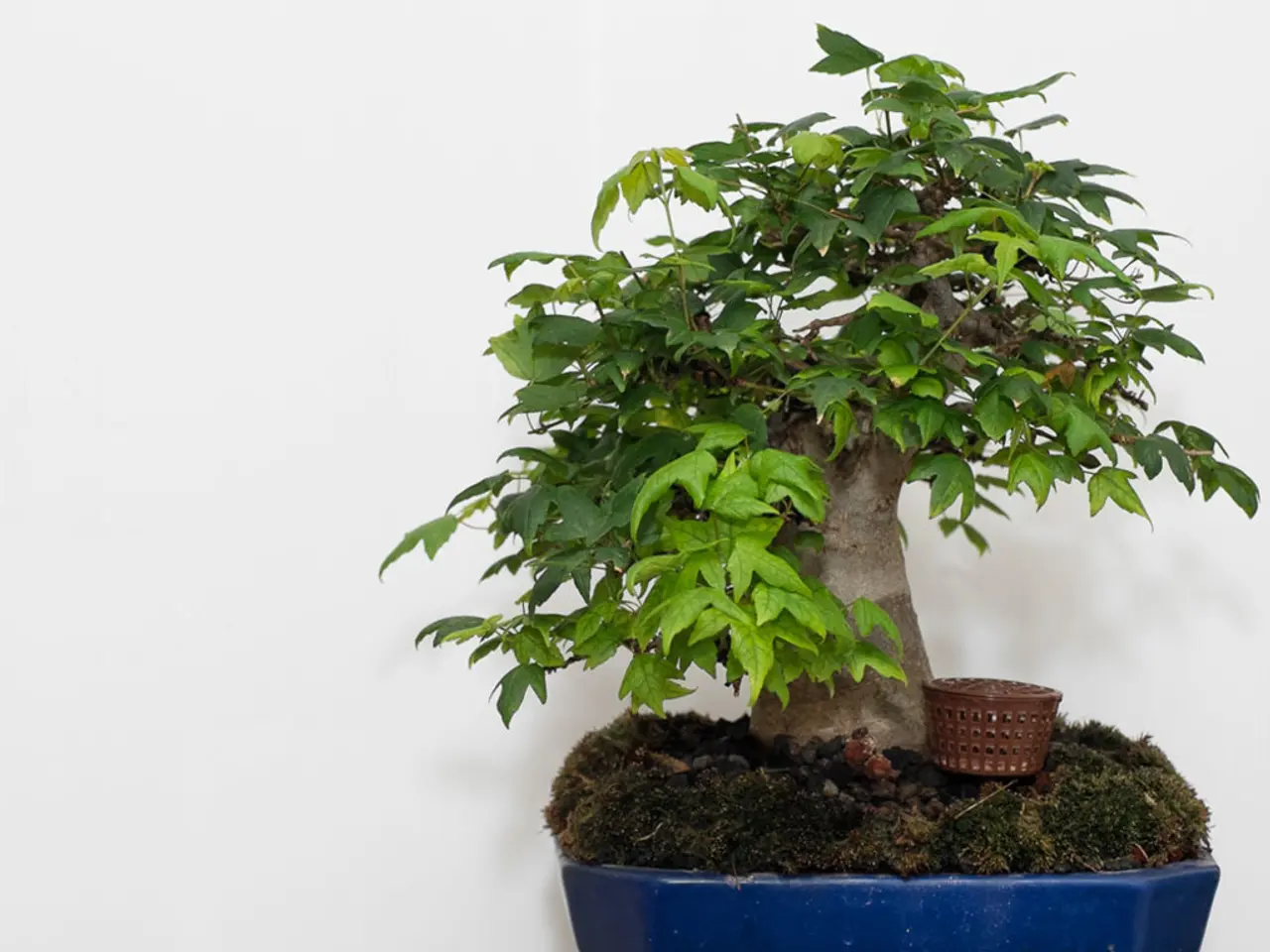Bonsai Species Research: Learning About Demands Before Buying a Bonsai
Bonsai, the art of growing miniature trees in containers, has gained popularity worldwide. To ensure the optimal growth and development of various bonsai species, it's essential to understand their individual preferences in watering, fertilization, pruning, pest and disease management, and climate conditions.
For instance, the Alder bonsai (Alnus) thrives in wetter soil than many bonsai species. It requires consistent moisture, especially during the growing season, and good drainage to prevent root rot. In contrast, Acer palmatum 'Atropurpureum' (Japanese Maple) does not tolerate drought and grows in limited soil volume. It needs regular watering, especially in the summer, and should be watered several times a week, especially during heatwaves.
Fertilization is another crucial aspect of bonsai care. Alder benefits from monthly fertilization during spring and summer with a balanced fertilizer, while Japanese Maple prefers bonsai-specific fertilizer rich in nitrogen to promote new shoot growth.
Pruning techniques also vary between species. Alder requires regular pruning to maintain shape and encourage fine branching, while Pieris japonica needs pruning in early spring to maintain shape, cutting back new shoots to 2–3 leaves for compact foliage.
Pests and diseases can pose a threat to bonsai health. Alder is susceptible to aphids, scale, and fungal leaf spots, while Pieris japonica may suffer from lace bugs, aphids, and fungal leaf spots. Regular inspections and prompt treatment with appropriate pesticides or fungicides are necessary when necessary.
Climate preferences also differ among bonsai species. Alder thrives outdoors in full sun or partial shade and requires cold winter dormancy, while Pieris japonica prefers cool temperatures and humidity, with protection from harsh midday sun and frost below -6 °C (20 °F).
When it comes to repotting, Alder requires it every 2 years when young and every 3–4 years older, while Pieris needs repotting every 2–3 years in acidic, well-draining soil with gentle root pruning.
It's worth noting that mixing bonsai species in the same growing area can compromise the health of your trees due to potential interspecies competition, pest transmission, and differing care requirements.
Researching the watering needs of a bonsai species is crucial to prevent over- or under-watering. Many bonsai species thrive indoors, such as Ficus, Chinese Elm, and Serissa. Each bonsai species has unique preferences for light, with some species, like the Juniper, thriving in full sun, while others, such as the Chinese Elm, prefer partial shade.
Thorough species research is vital for bonsai success, as a single tree can live for centuries and may require over 100 years of precise care to reach maturity. Selecting native species for outdoor bonsai cultivation can reduce maintenance and care requirements and increase the likelihood of thriving, healthy trees.
Using containers with built-in barriers or root pruning techniques can help manage bonsai species with invasive root systems. Pruning during the correct season can impact a tree's response, with some species responding better to spring pruning and others to autumn pruning.
Finally, it's important to remember that certain bonsai species, like Juniper and Pine, require more frequent pruning to maintain their shape and size. Some species require high humidity, while others prefer dry conditions. Understanding these unique preferences is key to ensuring the health and longevity of your bonsai collection.
Home-and-garden enthusiasts will benefit from a tailored approach to gardening, considering the specific needs of various bonsai species. For instance, the Alder bonsai requires consistent moisture and good drainage, while the Japanese Maple prefers regular watering and a bonsai-specific fertilizer rich in nitrogen.
When it comes to pruning, Alder benefits from regular pruning to maintain shape, whereas Pieris japonica needs pruning in early spring to maintain shape with cutting back of new shoots to 2–3 leaves for compact foliage.




